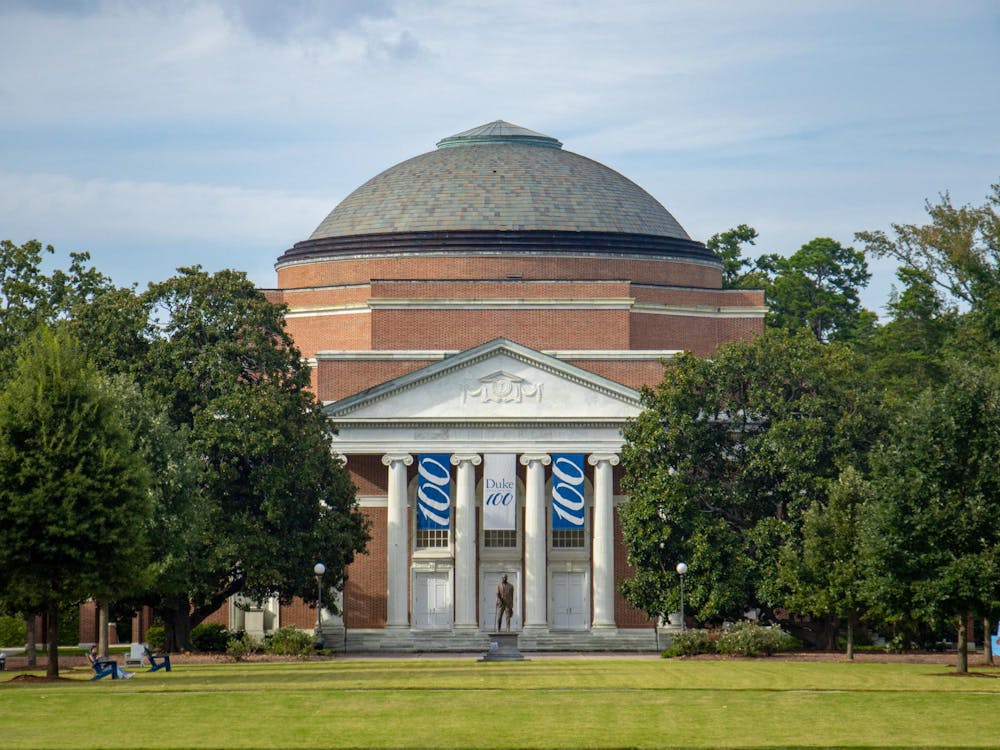The Modigliani Quartet, named after modernist painter and sculptor Amedeo Modigliani, visited Duke and Durham for the second time in seven years this past Sunday, Oct. 27. The quartet consists of Amaury Coeytaux and Loïc Rio on the violin, Laurent Marfaing on the viola and François Kieffer on the cello. They’ve been together since 2003, with only one membership change.
This performance was put on by Duke Arts for their Chamber Arts Series, a program featuring small groups selected by the Chamber Arts Society of Durham. Future performances include the cello-piano duo David Finckel and Wu Han, three quartets — the Goldmun Quartet, the Elias String Quartet, and the Jerusalem Quartet — and the Zodiac trio.
The Modigliani Quartet has performed at venues like Wigmore Hall in London, the Paris Philharmonie and the Vienna Konzerthaus — as well as our very own Baldwin Auditorium. The quartet performs on four Italian instruments constructed between 1660 and 1780, including a Stradivarius. The age and craftsmanship of the instruments becomes tangible as one gets physically closer and attempts to feel the music deeper. What would be an appropriate B flat on a quality Spotify stream becomes lived-in and reverberated through the body of the violin, viola or cello. The instrument melds with the performer beyond the straightforward beauty of the composition. When listening live to such a quartet, the interplay of the musicians, the facial expressions and differing temperaments of the performance give the composition a life beyond what could be done by a sheet music scanner.
Their performances consisted of 3 pieces: Anton Webern’s “Five Movements for String Quartet, Op. 5,” Maurice Ravel’s “Quartet in F Major” and Ludwig van Beethoven’s “Quartet No. 8 in E minor, Op. 59, No. 2.” Webern’s piece was the most compositionally unique of the three — consisting of plucky bowing techniques and a vast range in volume and intensity. Webern is known for his implementation of Klangfarbenmelodie – the use of tone color in the establishment of musical language. The movements built and disappeared until the fifth and final movement, which established itself as the most grand and boisterous.
Webern’s suite was followed by Ravel’s only string quartet composition. When discussing Ravel, he is consistently compared with his peer, Claude DeBussy. Their compositions are usually discussed within the impressionist movement — defined by its ambiguous tones and timbre. In contrast to the general anxiousness induced by the unique form of the Webern composition, this piece by Ravel was performed with familiarity and confidence. It was a uniting moment for the audience — a sigh of relief and gasp of exaltation.
After an intermission, the program concluded with “Quartet No. 8 in E minor, Op. 59, No. 2,” Beethoven’s second “Razumovsky” Quartet, written in 1806. The first movement appears uncertain and frantic, a meaningful contrast to what follows in the second. The “Molto adagio” lives up to its name and is slow and contemplative, never lacking in beauty or passion. The third movement progresses with a Russian folklore theme, “Glory to the Sun,” a knowing nod to the dedicatee of the piece. It builds and silences, all leading to an eruptive finale.
Performances like these, put on by Duke Arts, emphasize the impact that Duke Arts can have. Bringing in voices from across the country and world, Duke Arts and the Chamber Arts Society of Durham are giving Duke students and the Durham community the chance to broaden their horizons, although it appeared like it was mainly the Durham community that took advantage of it. It was truly one of the prettier performances I’ve been to — filled with life, community, talent, history and gratitude. It was not something I ever would have gone to if it wasn’t so accessible, I just hope more could do the same.
Get The Chronicle straight to your inbox
Sign up for our weekly newsletter. Cancel at any time.
Kadin Purath is a Trinity junior and a culture editor for Recess.

